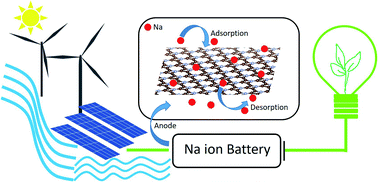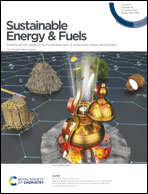Ab initio characterization of N doped T-graphene and its application as an anode material for Na ion rechargeable batteries†
Abstract
Tailoring 2D materials to tune their electrochemical characteristics for application as functional materials brings about a major breakthrough in optoelectronics. In this study, we report a novel material designed by heteroatom doping, N doped T-graphene, implementing a first principles approach in density functional theory. The structural and geometrical parameters are established by ab initio simulations. Having confirmed the static and dynamic stabilities, the monolayer is further identified to be metallic in electronic behavior. Heteroatom doping imparts competitive adsorption sites on the monolayer surface for Na ion adsorption, which is systematically studied for interaction possibilities. Moreover, the electron density modulation in the monolayer owing to alkali ion adsorption is well monitored. To identify the material's potential for an anode in Na ion batteries, the energy barrier and storage capacity are evaluated. The low diffusion barrier (0.5 eV) in addition to high storage capacity for Na ions (754 mA h g−1) implies better adsorption/desorption rate kinetics. On top of it, the monolayer possesses a voltage of 0.26 V, which categorizes it to be amongst the best materials as an anode for sodium ion rechargeable batteries.



 Please wait while we load your content...
Please wait while we load your content...